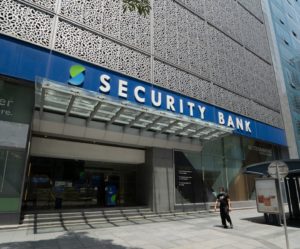The Ayala Group’s Bank of the Philippine Islands (BPI) will consolidate its branch presence amid an ongoing merger with Gokongwei-led Robinsons Bank as it sets an ambitious target of growing its client base by five times to over 50 million in five years.
Maria Cristina “Ginbee” Go, BPI head of consumer banking, said in a recent interview the aggressive target came as the country’s third-largest lender expands its presence through affiliate or agency banking partnerships.
She said the lender has so far reduced its branch network to 752 locations from over 860 last year.
Go added this would go down to just above 700 branches by the end of 2023 as they rationalize duplicate locations with Robinsons Bank. The P27-billion acquisition of the latter could be completed as early as October this year.
“Even before the merger, we had some consolidation and during the merger we had even more consolidation,” Go said.
“It’s really about optimizing our physical footprint and that is consistent with the objectives of the merger,” she added.
Despite a smaller branch network, the lender planned to ramp up its agency banking presence, which would lean on the Gokongwei network’s vast retail presence.
This would include Robinsons Retail outlets and Generika drugstores across the country, she said.
Sustaining growth
The remaining branches would be transformed into “financial advisory centers” offering high-value services.
“Our goal in the next five years is to bring more Filipinos into the banking industry. We’re hoping we can bring in 50 million clients in five years,” Go said.
The plan would also help sustain growth coming from record profits of P39.6 billion last year, the bank said.
The lender continued such momentum in the first quarter of 2023 after recording a 52-percent profit surge to P12.1 billion as net interest earnings climbed over 27 percent.
BPI ended the first quarter with total assets of P2.7 trillion, up 12.4 percent, while return on assets stood at 1.88 percent.
It closed the period with a P331.6 billion indicative common equity tier 1 ratio of 15.7 percent and a capital adequacy ratio of 16.6 percent, both of which were above regulatory requirements. INQ


